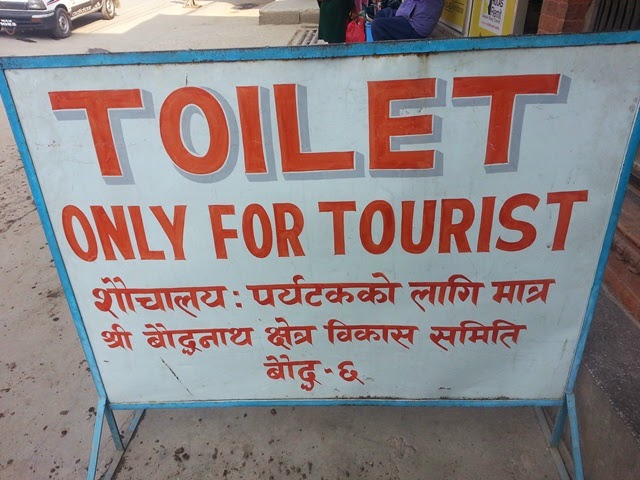Being in a foreign land can be exciting as well as
amusing. My visit last week to Kathmandu and Lumbini in Nepal to attend Lumbini
International Conference on Media and Peace was filled with spiritually
stimulating moments as well as lighter, memorable moments. I posted a few lines
and pictures on serious, contemplative subjects in my previous posts. In this
post, let me share with you some lighter moments pictorially.
A Bhutanese can feel pretty at home in Kathmandu. When
you shed the national dress that sets you apart, you can be easily taken for a
Nepalese of Tibetan stock from the hills. And if you speak some Nepali, the
locals wouldn't have a second thought about your nationality.
Although your ability to integrate into a foreign society instantly can be
helpful in many ways, it can deprive you of some small privileges that
foreigners enjoy, particularly if you are staying in a tourist hub like
Kathmandu’s Thamel district. Thamel is so full of tourists that every local
seems to exist and work only for tourists. For them, locals do not exist. Or so
it seems. If you look like a Nepalese, handicraft sellers do not notice you
even if you stand in their shops poring over their items for several minutes.
They break into a big grin the moment an English-speaking, fair-skinned
westerner pops in. ‘Welcome, sir. Anything you need, sir? This made of all pure
baby yak hair, sir. Giving discount also, sir,’ a sullen-looking shopkeeper is
suddenly inspired to praise his goods in a stream of sir…sir…sir. You can be
forced to feel faceless. It’s something akin to the habit of bigger handicraft
shopkeepers in Bhutan. When a Bhutanese walks into a handicraft shop and asks
the price of an item, the response one usually gets is, ‘It’s expensive’ or ‘Do
you want to buy it?’ In Thamel, a Nepalese-looking person is hardly noticed
anywhere – in shops, bars, coffee shops, and restaurants. Even toilets seem to
be all marked out for tourists.
Next time you are in Kathmandu, don’t forget to read
the signboards. If signboards are character traits of a city, Thimphu and
Kathmandu are unmistakably sisters. A small roadside shop in a corner of
Gongabu in northern Kathmandu has put up this signboard.
And this ‘shose’ store in Gongabu.
The label on this Tuborg beer is packed with
information and messages. Two lines that stand out are: Deserve to sit back/And
enjoy responsibly. I like both the lines. The first line uses the word deserve
intransitively, which sounds not quite correct but quite creative. Read it
again and think of possible meanings. It is interesting, isn't it?
The second line is the right thing to do. Comparatively, Bhutan’s Druk
11000 has hardly any text on the label.
And this on the doors of the toilets at a roadside
restaurant between Lumbini and Kathmandu. This is cutely simple and straight.
I noticed something on this signboard in English and
Tibetan at the Boudha Stupa in Kathmandu. Doesn't the translation of
‘no entry’ in Tibetan read more polite than the Dzongkha translation which
is mostly ནང་ན་འཛུལ་མི་ཆོག་?






No comments:
Post a Comment